Essential Arts: Monuments fall, Juneteenth traditions in Los Angeles
- Share via
Welcome back! I’m Carolina A. Miranda, staff writer at the Los Angeles Times, with the week’s essential culture news — and artsy Twitter bots:
Marking Juneteenth
Juneteenth marks the day in which enslaved people in Texas belatedly learned of their freedom — two and a half years after the Emancipation Proclamation. The Times’ Gustavo Arellano looks at how the holiday has been historically celebrated in Los Angeles — turning up in 19th century clips from The Times and the Los Angeles Herald that note early celebrations.
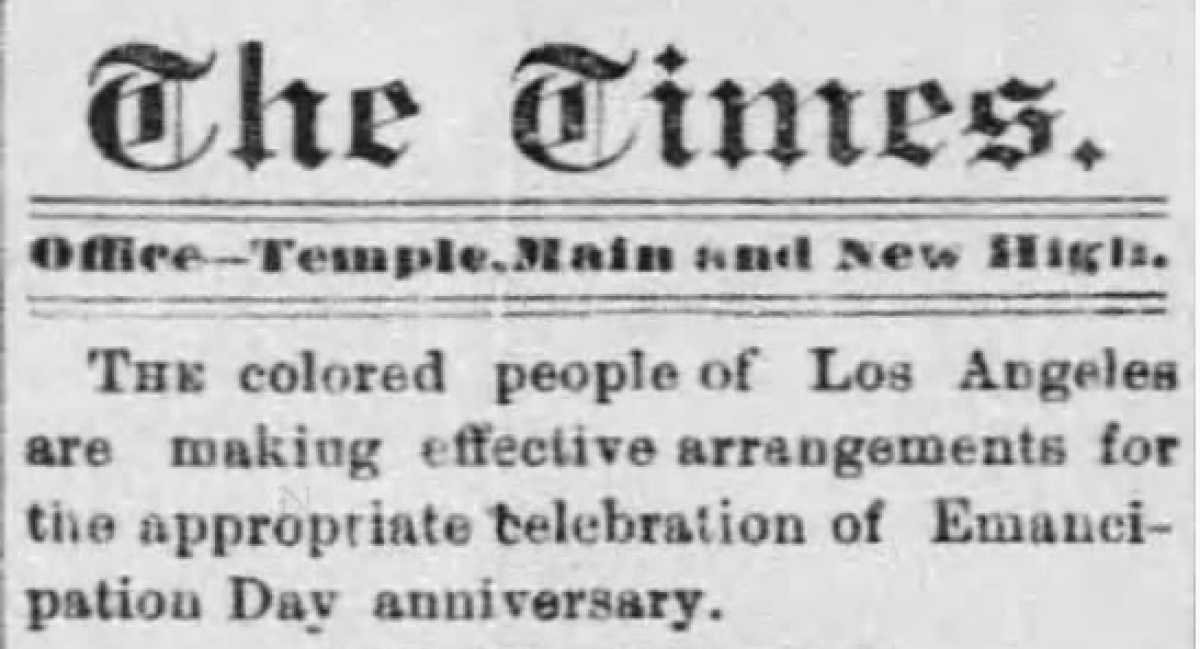
Plus, the California Historical Society has an informative post about how the celebrations came to California. Times TV critic Lorraine Ali examines how Black TV creators — Donald Glover with “Atlanta” and Kenya Barris with “black-ish” — have brought Juneteenth into cultural consciousness.
And Steven Nelson, the incoming dean for the Center of Advanced Study in the Visual Arts at the National Gallery of Art (who was until very recently at UCLA), writes about how Juneteenth brings to mind the words of Booker T. Washington: it “stands for effort, not for victory complete.”
Art in our time
As people in cities around the world took to the streets to protest systemic racism, German pianist Igor Levit sat down at his keys and performed Erik Satie’s “Vexations” 840 times over 15½ hours. Times classical music critic Mark Swed reports that Satie has become the go-to composer during this troubled time: “In his strange music, his irreverent prose, his inexplicable mannerisms, his radical attitudes and his incomprehensible inconsistencies, Satie may just be what we need: With the insight of a genius and an oddball’s mischievous wit and miraculous wisdom, he turned everything on its head.”
Times theater critic Charles McNulty spent quality Q&A time chatting with Broadway star and two-time Tony Award-winner Patti LuPone. In a highly enjoyable, freewheeling conversation, they talk about the pandemic, #MeToo, the collective nature of stage craft, her most beloved roles and the political moment. “I am in awe, inspired and moved to tears by the protesters in this movement/revolution,” she tells him. “It’s overdue.”
The city and civil rights
The protests against George Floyd’s killing have raised issues of structural racism across society, including the world of design and urban planning — a field that shapes public space through design and policy. I spoke with nine urbanists, architects and advocates about how we can make public space more equitable for Black people. Part of that will comes from reckoning with the past, says Columbia University architectural scholar Mabel O. Wilson: “The built environment, it emerges from European encounters of colonialism. In the West, that’s what architecture is — the European project that reached out and developed a kind of system of domination economically, politically and racially.”
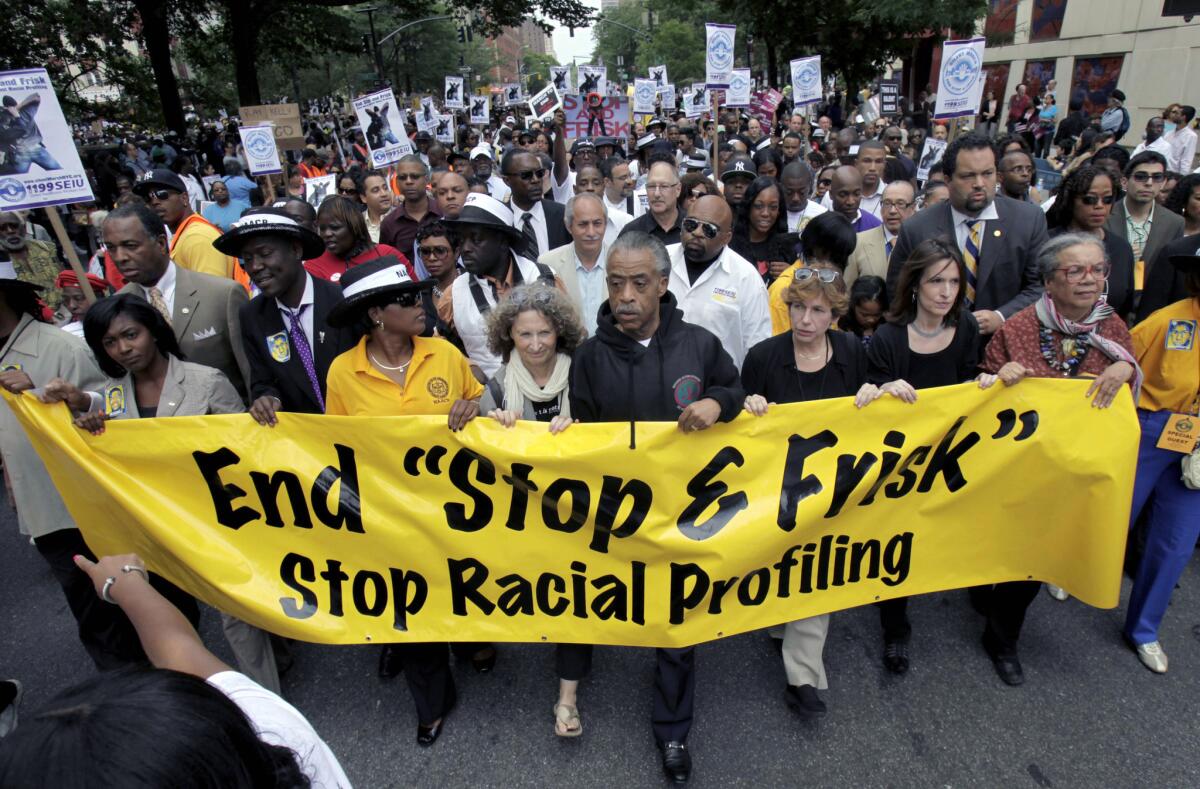
Many urbanists have also written pieces that list numerous ideas for how to make public space more equitable.
Amina Yasin, who works on development and policy planning in Vancouver, has a list of four points that includes abolishing “communicide” — planning that destroys a cohesive community and disperses the tenants.
Destiny Thomas, a planner and cultural anthropologist from Oakland, suggests including environmental justice as a tenet of city planning. And architect Bryan Lee Jr., who is the design principal at the New Orleans-based firm Colloqate, recommends that architects “stop supporting the carceral state through the design of prisons, jails and police stations.” (The latter point was echoed in a column by New York Times architecture critic Michael Kimmelman.)
Make the most of L.A.
Get our guide to events and happenings in the SoCal arts scene. In your inbox every Monday and Friday morning.
You may occasionally receive promotional content from the Los Angeles Times.
Susan A. Phillips, a professor of environmental analysis at Pitzer College, writes about the significance of graffiti during the Black Lives Matter protests: “Protest graffiti is a critical intervention in urban space, especially as municipalities and police attempt to shut down the streets.”
A drone’s eye view of the “All Black Lives Matter” sign painted onto Hollywood Boulevard.
Monuments falling
Statues around the country continue to come down. The Asian Art Museum in San Francisco is removing a bust of patron Avery Brundage, who has been suspected of being a Nazi sympathizer. The museum has also pledged to examine his legacy.
In New Mexico, a man was shot at a protest over a public monument to Spanish colonizer Juan de Oñate. Among his various brutal acts as governor in the early 16th century, Oñate ordered his men to cut off a foot of Acoma men. In 1997, activists sawed off a foot of an Oñate statue in Alcalde as symbolic retribution. (Simon Romero had a good story about it in the New York Times in 2017.)
Related: archeologist and historian Kurly Tlapoyawa compares the impetus to maintain the statue of Oñate to the desire to maintain Confederate symbols in an essay from 2018.
Madge Dresser has a look at the history of how the statue of notorious slave trader Edward Colston in Bristol, England, came to be.

Art critic Philip Kennicott of the Washington Post has an idea for all those plinths: leave them empty.
Coronavirus and the arts
The A+D Museum will shut down its Arts District gallery and instead focus on pop-up and virtual programming, reports The Times’ Deborah Vankin. Moving forward, A+D will present architecture and design exhibitions throughout Los Angeles, as well as in other cities. The focus, explains executive director Anthony Morey, is “community-based exhibitions and events where people don’t have to come to us, but we come to them.”
The Center Theatre Group will remain dark until the spring of 2021. L.A.’s largest nonprofit theater company will not resume productions until late April (with “To Kill a Mockingbird”), reports Ashley Lee. “Should health officials become more optimistic about a safe timeline to resume large gatherings, we will work as quickly as possible to return to the stage sooner,” says artistic director Michael Ritchie.
Related: Carnegie Hall and Lincoln Center have canceled all fall shows. New York’s two major classical music organizations will likely not have any large-scale performances until 2021.
Enjoying this newsletter? Consider subscribing to the Los Angeles Times
Your support helps us deliver the news that matters most. Become a subscriber.
The Academy Museum of Motion Pictures is delaying its opening to April of 2021 due to “the unprecedented and devastating pandemic.”
In addition, the Joffrey Ballet has canceled all performances through the end of 2020.
The Getty Foundation has awarded $2 million in grants to 80 L.A. arts organizations affected economically by the pandemic. The foundation has also awarded $700,000 in relief grants to 400 Los Angeles artists.
The Times’ Makeda Easter surveyed 18 performing arts organizations in L.A. to find out what percentage of audiences have donated the cost of their tickets from canceled shows as a way of supporting these arts groups. The totals vary by organization. For example: for canceled Disney Hall shows, 11% of ticket income was donated, while the Antaeus Theatre Company in Glendale had 40% of ticket holders donate their ticket fees. It’s “an interesting time to think about what certain economics performing arts are functioning under,” says Edgar Miramontes, deputy executive director at REDCAT, “and envision this other model that doesn’t rely necessarily so much on ticket revenue.”
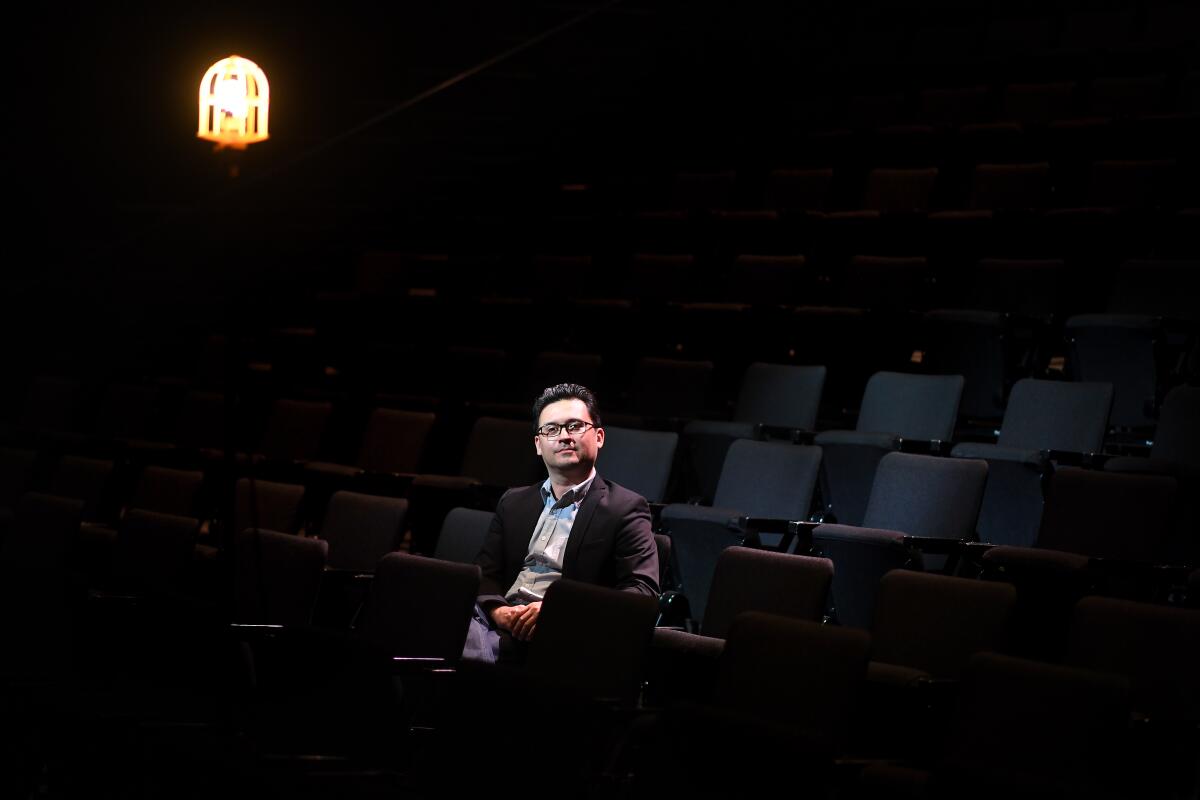
In the cultural arena
Galleries are creeping open with timed visits and safety precautions. Times art critic Christopher Knight pays a visit to Michael Tedja’s installation of painted paper works at Chimento Contemporary, which had been briefly on view before the safer-at-home orders landed. The works, produced on 210 sheets of commercial card stock, make for an environment that “erupts into a boisterous visual cacophony, playfully mad.”
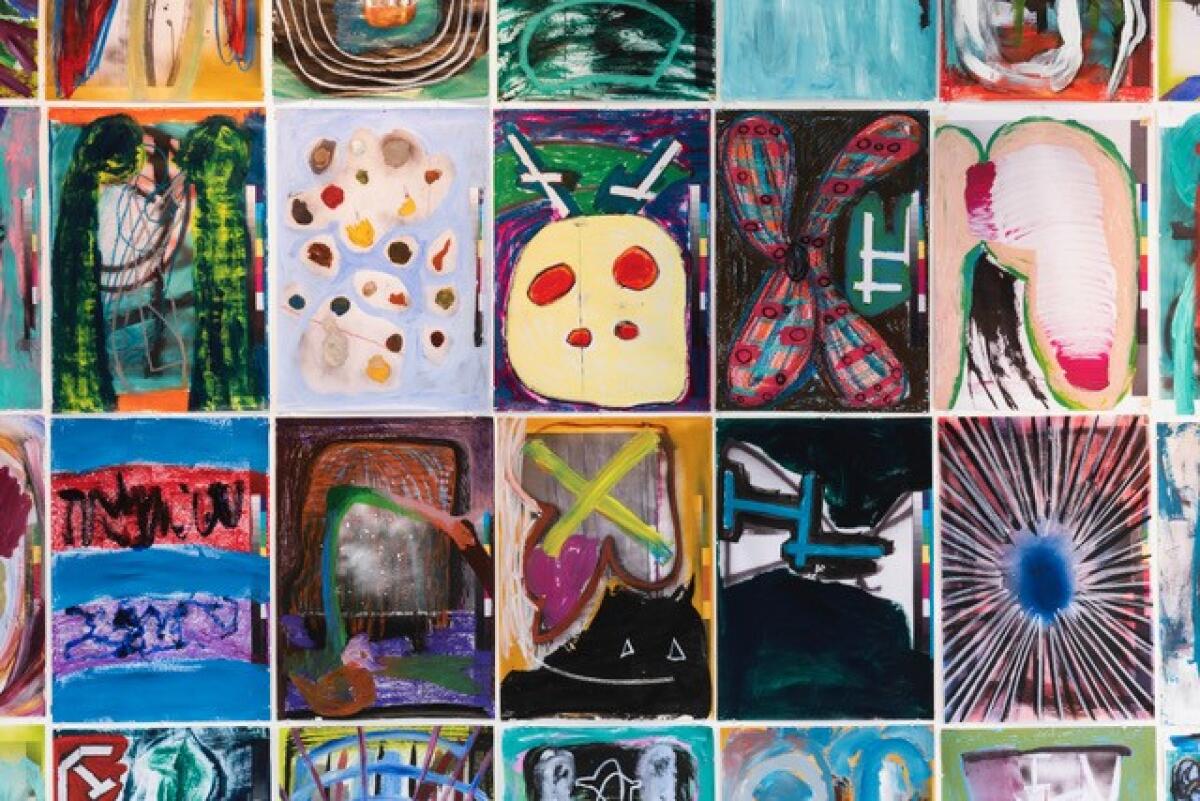
You may know Kimberly Drew as @museummammy on social media. (She founded the Black Contemporary Art blog on Tumblr.) She now has a book out, “This is What I Know About Art,” that is geared at a teen audience, but offers valuable lessons about art, race and empowerment. Writes Knight in his review: “Call this a meaningful, profoundly personal lesson in scale and complexity, themes essential to any deep understanding of works of art, museum cultures and how they operate in American life.”
The best arts online
On Sunday evening, Los Angeles Nomadic Division is streaming a series of video and performance works organized by L.A. artist Guadalupe Rosales. The project, titled “Channel Flip, Meet Me at the Edge of the Sun,” will explore questions of violence and how it is experienced and released by the body. It was a theme that happened to coincide with the protests, which began as she was filming her piece.
Matt Cooper has been staying on top of the countless number of online offerings. On his rundown is a virtual, socially distant performance of a long-lost work by the Martha Graham Dance Company that served as a response to the cruelties of the Spanish Civil War.
Dance writer Gia Kourlas has an interesting piece about how Graham‘s lost choreography was unearthed. The piece, titled “Immediate Tragedy,” dates to 1937 and was reassembled using archival sources such as photography. Composer and conductor Christopher Rountree of Wild Up created the new score and it will air courtesy of the Younes and Soraya Nazarian Center for the Performing Arts and the Martha Graham Dance Company.
FWIW, I caught the Friday premiere of the work while writing this newsletter and it is very stirring. Here’s a link to the performance on YouTube.
New York’s Goodman Gallery has helped organize a mini-festival of the films of Shirin Neshat (who recently had a solo show at the Broad). Starting Saturday, her films will each be available online for 24 hours, one of them in collaboration with the Art Newspaper.
And the La Jolla Playhouse has launched an online program called Digital Without Walls (WOW). The first episode is available online and I’m here for it: Culture Clash’s “The Totally Fake Latino News.” Somebody please give Bob Raza a show. Find other episodes at this link.
Find more listings at our Things to Do: Culture page.
Passages
Manuel Felguérez, an abstract artist who was part of a generation of 20th century Mexican painters who broke with the muralist movement (known as la Generación de la Ruptura), has died at the age of 91 of COVID-19.
In a tribute (in Spanish), that covers the artist’s life and career, Gerardo Antonio Martínez writes that Felguerez’s raw materials were geometries and colors and that his work always displayed a “fidelity to experimentation.”
Essayist Elena Poniatowska, who was a longtime friend of the artist, writes that he brought “a breath of fresh air” and “rebellion” to Mexican art.
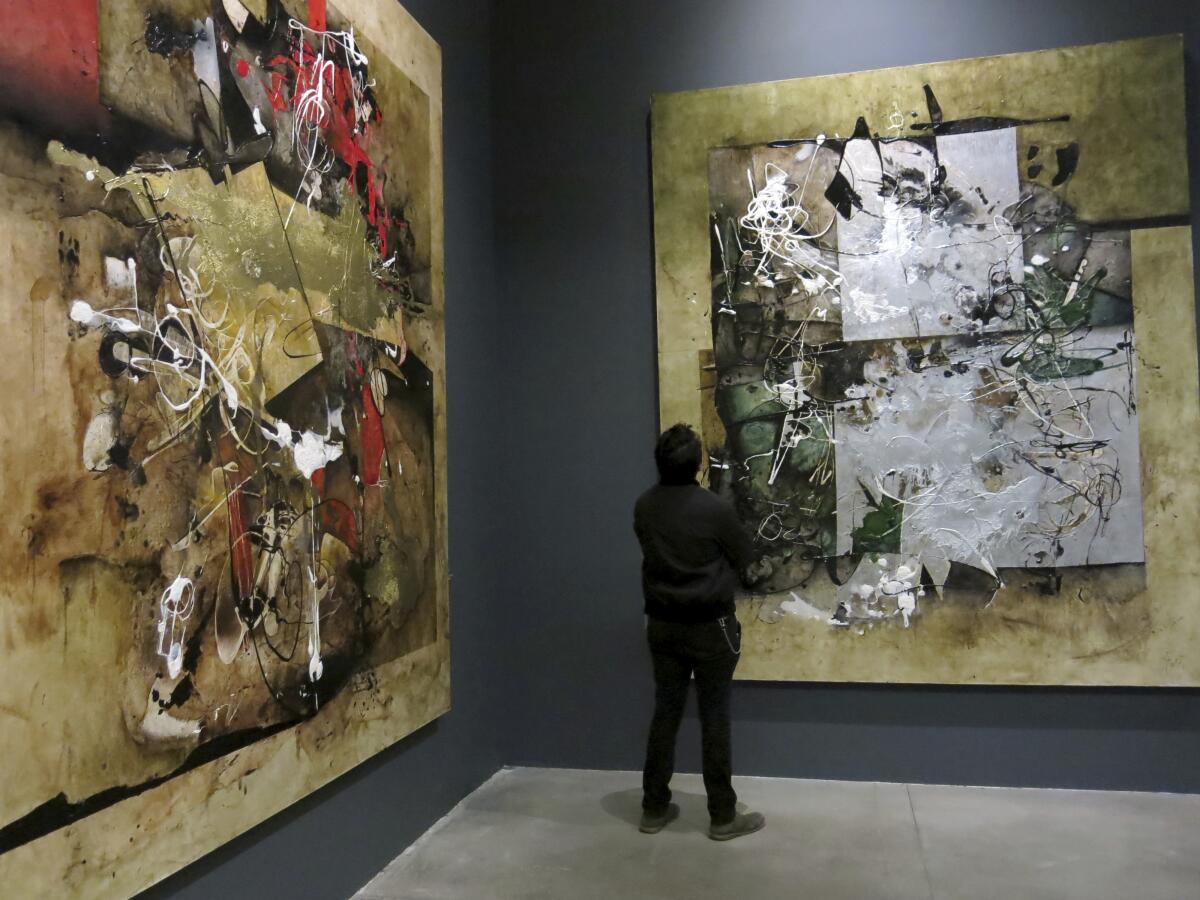
Ralph Caplan, a scholar and critic who explored the nature of industrial design in accessible ways, has died at 95. Best anecdote from the New York Times obit: “He said his most daring editorial innovation was to send his out-of-work actor friends to design events as a cost-saving measure. Paid in snacks and cocktails, they brought back press kits for the magazine’s tiny staff to review.”
In the news
— Betye Saar became known in the 1970s for a mixed-media assemblage titled “The Liberation of Aunt Jemima” that featured a mammy figurine brandishing weapons. After Quaker Oats announced that it is discontinuing the Aunt Jemima brand, Saar issued a statement in response: “She’s liberated! Finally at long last!”
— L.A. painter Mark Steven Greenfield — who has an interesting background both as protester and, later, a police artist — reflects on the political moment.
— The National Museum of African American History and Culture is launching a collection initiative called “Rendering Visible” that aims to gather work by Black architects.
— Dancewear companies are reckoning with the implicit bias of the color “nude” — which by default means white.
— Glenn Adamson on the myths of Japanese minimalism.
And last but not least ...
Follow @boschbot, a bot that Tweets bits of Hieronymus Bosch’s “The Garden of Earthly Delights” throughout the day. Pairs well with news.
The biggest entertainment stories
Get our big stories about Hollywood, film, television, music, arts, culture and more right in your inbox as soon as they publish.
You may occasionally receive promotional content from the Los Angeles Times.




